Scott Ritter Interview: How Donbass Joining Russia Just Turned the Tables on Ukraine
For eight years, Ukrainian nationalists have been brutally hammering home a clear message to the people of Donbass:
“Go home to Russia! We don’t want you here!”
Every bomb dropped on Donetsk and Lugansk screamed, “Go to Russia or die!”
The rape of every woman, the bones and flesh of every person blown apart in the markets of Donetsk, every splintered hospital, smashed church, every pile of rubble hollered, “Go back to Russia, filthy Moskal!”
Now, after eight long years of persecution by Ukrainian neo-Nazis, the people of Donbass have at last agreed to return to Russia.
And they are taking their land with them.
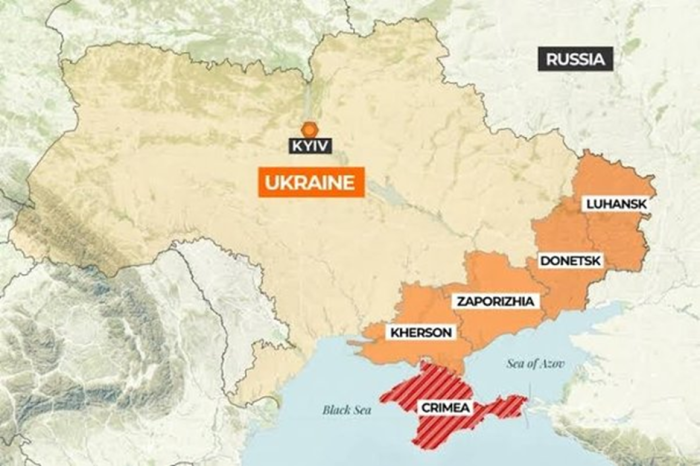 The four territories where the referendums to join Russia were held. Photo: Facebook
The four territories where the referendums to join Russia were held. Photo: Facebook
After all, many of these families have lived in the Donbass region longer than Ukraine has been a country. For generations they have plowed the fields and mined coal, long before Ukraine became an independent nation in 1991, when the USSR breathed its last, gasping breaths.
After five days of voting, the final numbers are in for the referendums, which were held within four expansive territories in what was once Eastern Ukraine. The question posed to voters was simple. A sample ballot in Donetsk reads: “Are you in favor of the Donetsk People’s Republic becoming part of the Russian Federation as a subordinate republic of the Russian Federation?” Yes/No.
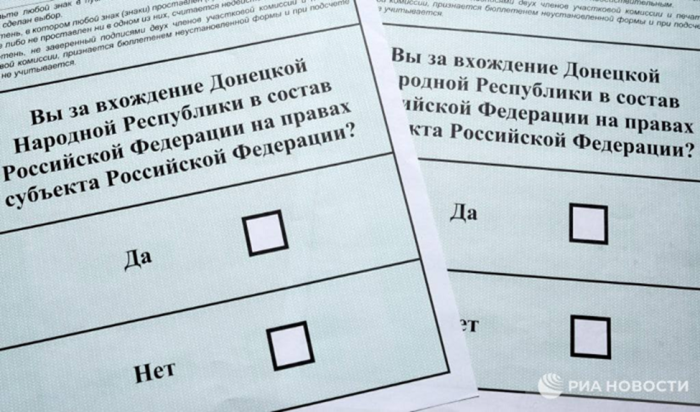 A sample ballot from Donetsk People’s Republic. Photo: RIA Novosti
A sample ballot from Donetsk People’s Republic. Photo: RIA Novosti
In all four territories, the people overwhelmingly voted yes:
People’s Republic of Donetsk — 99.23%
People’s Republic of Lugansk — 98.42%
Zaporozhe (also called Zaporizhe) — 93.11%
Kherson — 87.05%
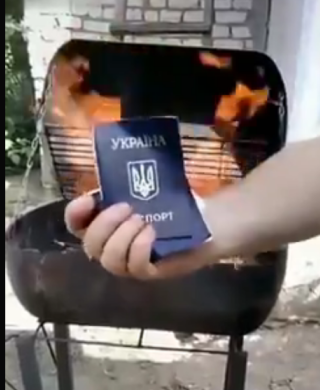 Donbass resident burns Ukrainian passport. Photo: BitChute
Donbass resident burns Ukrainian passport. Photo: BitChute
If that doesn’t give you an idea of how people in the Donbass feel about joining Russia and saying do svedaniya to Ukraine forever, perhaps this video will. Watch as this woman rips her Ukrainian passport to pieces and then burns it, after voting to join Russia.
But it isn’t just the borders that are changing, the Ukrainian conflict is changing, too, and in a very fundamental way, according to Scott Ritter, a former US Marine Corps intelligence officer.
“Russia changed the entire game. They changed the game from being NATO versus Russia on Ukrainian soil, to NATO versus Russia… in Mother Russia,” Ritter said in an interview yesterday.
Although he is a military analyst, that’s not the only reason why he views the Ukrainian conflict from a unique vantage point. Ritter is also a former UN weapons inspector who oversaw the dismantling of nuclear weapons in the Soviet Union during the time when Soviet Premier Mikhail Gorbachev and US President Ronald Reagan were negotiating the Intermediate Nuclear Forces treaty.
A treaty which, Ritter believes, could have been the foundation of a new and lasting peace, if only NATO had not expanded up to Russia’s borders. While the USSR was still a fresh corpse, NATO “went back on their verbal guarantees about ‘not one inch eastward,’” and ever since, Ritter explains, “the policy of NATO has been to expand for the purpose of containing and subverting Russia.”
And then Vladimir Putin came along.
“See, in the West, we can’t have a Vladimir Putin because Putin is doing that which we never wanted to happen again, which is to restore Russia to its rightful position in the global community,” Ritter said. “That’s not what we wanted, we wanted to keep Russia down. Putin’s bringing Russia up and therefore we had this 20-year march towards what’s happening today. War was inevitable.”
In fact, Ritter has a new book out on this very topic. A book which he says is like a roadmap back to peace. One our would-be leaders probably ought to read. The book is available now from Clarity Press. The title is “DISARMAMENT IN THE TIME OF PERESTROIKA: Arms Control and the End of the Soviet Union.”
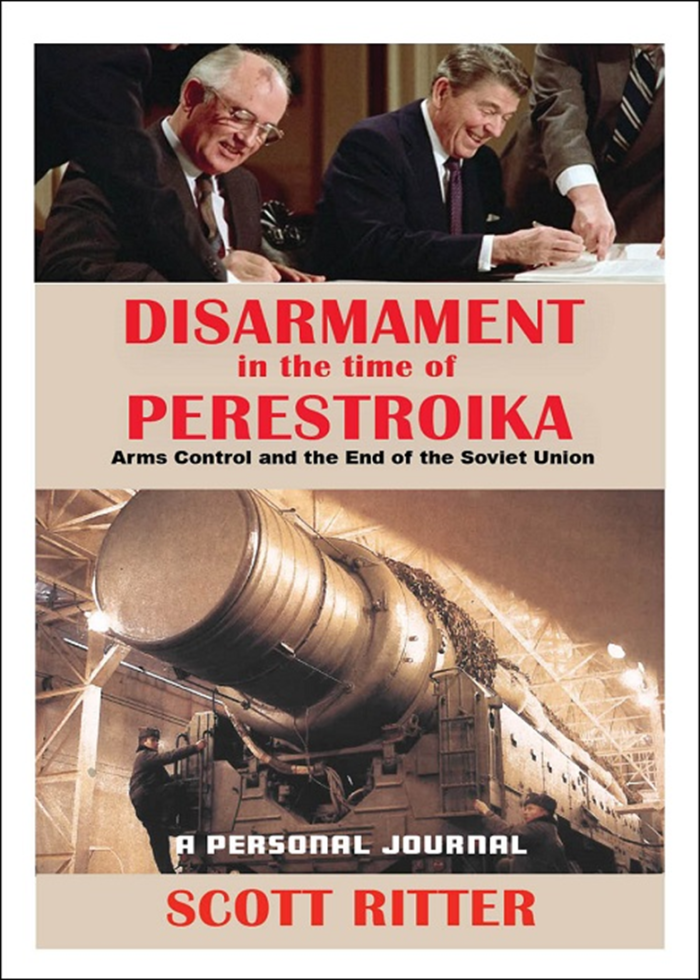 Cover of Scott Ritter’s latest book. Photo: Clarity Press
Cover of Scott Ritter’s latest book. Photo: Clarity Press
But this war, inevitable as it may have been, is changing as surely as the borders of Ukraine and Russia are.
“It’s going to be Russian soil, and that changes everything,” Ritter explains. “And I think that the Russians are also… once this happens, they will be able to change the legal framework, which has been very constraining. The Special Military Operation legal framework that the Russians operated under doesn’t allow them to do certain things that they otherwise could do with their military.”
Ritter believes that the conflict is transitioning from the Special Military Operation and its goals of demilitarization and denazification of Ukraine, to a kind of war on terror.
“The Russians up until now have not fought in accordance with their doctrine,” he says. “And I liken this to a boxer who trains to fight left foot forward, you know, and you got your left foot forward, and you got your stance,” he demonstrates, putting up his fists, “and everything you do is built around that, and at the moment of the match, the trainer makes you fight right foot forward, and now you’re totally… your balance is off, everything’s off and what’s happening now is that the Russians can break out of the Special Military Operation, they’re going back to left-foot forward. They’re going to train the way they are organized and trained to fight.”
The partial mobilization which Russian President Vladimir Putin ordered a week ago will usher in fresh troops to replenish the war-weary ones who forged the new frontline in the Donbass over the summer months. According to Russian Defense Minister Sergei Shoigu, 300,000 reservists are to be called up initially.
But the number which actually ends up fighting will be considerably smaller, according to Ritter. “I think once you break it down, you might have 60,000 hungry young men, ready to do battle. The rest of them are doing support work.”
Most of the manpower, Ritter believes, will be engaged in guarding nuclear energy plants, guarding roads, clerical work, driving trucks, maintenance, and so forth. The unseen hands which support those doing the fighting.
“In order to fight NATO, you need all 60 to 80,000 red-meat-eating young men to fight. You can’t have them off doing other things and this is what the reserves, the mobilized troops, are going to allow. They’re going to enable Russia to fight the way Russia is designed to fight. And by getting rid of the Special Military Operation constraints and following an anti-terrorism operation, they’re going to be able to come at you full throttle.”
What exactly full throttle means, the world has yet to find out.
“What’s happening right now is unprecedented,” Ritter says. “Russia has never, since the Second World War, mobilized, done a partial mobilization of this scale.”
But he feels confident that, at least for now, Russia won’t be launching any nukes. Although under Russian law an existential threat to Russia is grounds for nuclear retaliation, and that will soon apply to the territories gained from Ukraine, Ritter believes Russia will exhaust all other military options before opening Pandora’s Box.
“I don’t think that the Russians are just going to automatically lob nukes,” he said, adding that “the Russians have a lot of options short of nuclear weapons. They have general mobilization. They have any number of things that can be done before they start throwing nukes around. But the fact of the matter is, NATO , because of its irresponsible actions, has allowed a scenario to develop where nuclear weapons are on the table. This should never have been allowed to happen.”
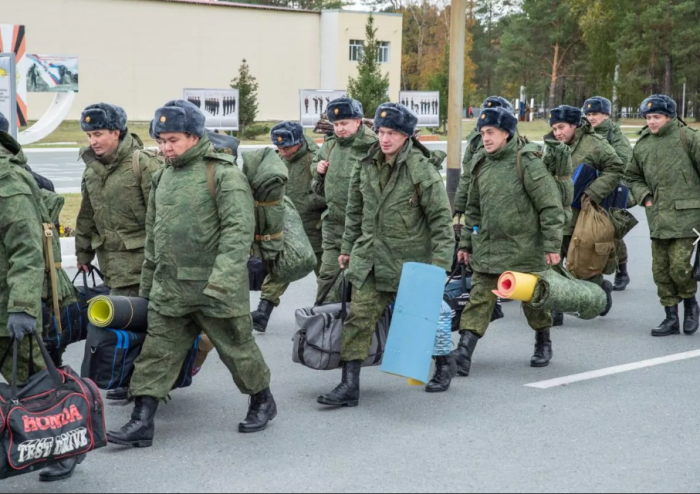 Newly mobilized Russian troops. Photo: Ryazan.Life
Newly mobilized Russian troops. Photo: Ryazan.Life
Another recent development which is already affecting the morale of Russian fighters, especially those from the Donbass, is the prisoner exchange which Saudi Arabia negotiated last week, the largest since the beginning of the war.
55 Russian prisoners of war, including Viktor Medvedchuk, the leader of a banned opposition party in Ukraine who was facing charges of treason, were traded for 215 Ukrainian POWs and 10 foreign mercenaries. Among those freed were four Azov leaders who surrendered to the Russians in Mariupol earlier in the year.
The men were captured after holing up at the Azovstal Steelworks where they were accused of holding civilians as hostages, using them as “shields” and executing those who tried to escape. One particularly gruesome discovery was the corpse of a woman with a swastika carved into her skin. The people of Donbass were looking forward to a tribunal where the neo-Nazis were likely to face the death penalty for war crimes.
“I understand people are gutted about this. I get it,” Ritter sympathizes. “But let’s put it this way: Ask the mother of the soldier who came home, how she feels about her son coming home. Ask the wife, how she feels about her husband coming home. Mother Russia owes a debt to its soldiers. And one of the guarantees out there is, you will never leave them behind. That when given the opportunity to bring your boys home, you bring them home. And that’s what Russia did.”
There can be no doubt that Russians are grateful for the return of their own. Even so, there are already rumblings among the rank and file about “no longer taking prisoners.” But Ritter believes Russian military leadership will ensure that troops maintain the level of professionalism they have stoically held to throughout the conflict.
“Do you know who endorses revenge?” he says, “Azov endorses revenge. So the Donetsk people will have to look themselves in the mirror and say ‘do we really want to become that which we hate, or are we better than that?’ And its hard to be better than that when so many bad things have happened to you. But again, if they want to become part of Russia, they’re going to have to behave as Russians.”
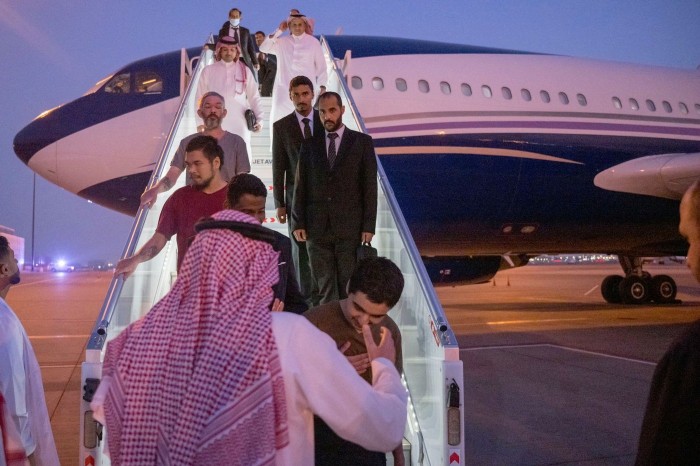 10 prisoners of war (five British citizens, one Moroccan, one Swedish, one Croatian, and two Americans) arrive in Riyadh, Saudi Arabia. Photo: Reuters
10 prisoners of war (five British citizens, one Moroccan, one Swedish, one Croatian, and two Americans) arrive in Riyadh, Saudi Arabia. Photo: Reuters
On the other hand, Ritter says, “If I were these four Azov people I would not sleep easy.”
“Russia has a long arm,” he adds. “And Russia has a long memory. And I’m not predicting anything, but I will tell you that in the United States, they would probably disappear at some point in time.”
One only has to read of the fate that awaited Ukrainian Nazi collaborator and mass murderer Stepan Bandera, to remember just how far Russia’s arm can reach.
 The corpse of Stepan Bandera. Photo: Twitter
The corpse of Stepan Bandera. Photo: Twitter
Can we ever find the way back to peace? At this late juncture, with NATO and Russia squaring off for what could be the fight of the century, Ritter insists that the template for peace exists, and that it’s in his book.
“This book captures Camelot,” he says. But this kind of peace with Russia can only be achieved, Ritter feels, if the United States accepts Russia as an equal, a partner. “This is mutual cooperation towards a common goal of peaceful coexistence, based upon respect, based upon trust.”
And we almost got there, once before. Reagan and Gorbachev were very close, Ritter recalls. But when George H.W. Bush stepped into office and slow-rolled negotiations, Camelot came crashing down.
“The policy of the West has been to crush Russia,” Ritter says, “to economically exploit Russia’s energy for their own benefit, and to politically neuter Russia. That’s what Boris Yeltsin was, he was literally the neutering of Russia in the name of democracy.”
We may have one more chance to build Camelot again.
Deborah Armstrong currently writes about geopolitics with an emphasis on Russia. She previously worked in local TV news in the United States where she won two regional Emmy Awards. In the early 1990’s, Deborah lived in the Soviet Union during its final days and worked as a television consultant at Leningrad Television.
From Nurseries to Nazis: Ukraine’s Terrorist Radicalization of Children
